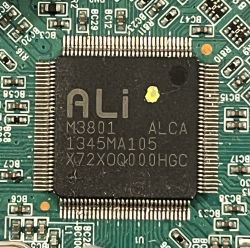Zbigniew Rusek wrote: (commutator motors are high speed
.
Series motors rather. Commutator motors which are currently used in screwdrivers use commutator motors with permanent magnets. The speed of such a motor does not depend on the existence of the commutator itself, but on its design - the number of rotor windings. In the case of a series motor (also a commutator motor), a lack of load may result in the motor "coasting" to such a high speed that the rotor windings may break down or the bearings may be damaged. It is true that in the case of series motors in drills, the load (sufficient to prevent the motor from coasting) is already introduced by the gearbox, but I would not advise switching on such a motor (especially a high-powered one) removed from a drill or other device without a load on the shaft. The drill motor is unlikely to run out even then, but its speed will certainly increase significantly.
Added after 11 [minutes]: .
Zbigniew Rusek wrote: (commutator motors are high speed
.
Series motors rather. Commutator motors which are currently used in screwdrivers use commutator motors with permanent magnets. The speed of such a motor does not depend on the existence of the commutator itself, but on its design - the number of rotor windings. In the case of a series motor (also a commutator motor), a lack of load may result in the motor "coasting" to such a high speed that the rotor windings may break down or the bearings may be damaged. It is true that in the case of series motors in drills, the load (sufficient to prevent the motor from coasting) is already introduced by the gearbox, but I would not advise switching on such a motor (especially a high-powered one) removed from a drill or other device without a load on the shaft. The drill motor is unlikely to run even then, but its speed will certainly increase significantly.
Zbigniew Rusek wrote: Asynchronous motors are in these large (stationary) drills
.
Here it would also be appropriate to specify what kind of motor we are talking about - an asynchronous motor is, after all, a squirrel-cage motor - with short-circuited rotor windings, and it is a type of asynchronous motor which can be found both in a gramophone (e.g. the Bambino, as well as in table drills, but in the larger ones - stationary ones, because such a motor, compared to a series motor, has a much greater mass for the same power), but also in, for example, industrial fans with a power output of several tens of kW. An asynchronous motor is basically any DC voltage motor - in such motors, there can be no talk of synchronisation with the mains frequency, because there is no frequency in the mains supplying the motor. It is not even possible to talk about the dependence of the voltage on the number of revolutions, as this also depends on the load on the shaft.
I know that I am simplifying and perhaps (certainly for professionals) confusing this, but let's remember that the forum is read also by young people who do not know all these dependencies, therefore if someone can systematise all types of motors in a kind of table taking into account the supply voltage, mechanical construction and all other performances and dependencies, they have a chance to prove themselves.





